Who bit the apple, Billy?
Billy Apple®’s apples
In London, on Thanksgiving Day 1962, New Zealand-born artist Barrie Bates changed his name to Billy Apple®, a name that forty five years later became a registered trademark.
Billy Apple® was chosen because it was simple and catchy and sounded more like a product than a person. “It drew on the wholesome properties of the fruit, as well as its multiple linguistic and narrative associations” says Christina Barton in the biography Billy Apple® Life/Work. Indeed, Billy referred to Adam and Eve’s apple as “the world’s first product”.
To have a name starting with the letter ‘A’ was important for the new art brand. Billy explained in a 2018 interview, “you are always near the top in listings…you don’t have to be first, but you’ve got to be close.”
Initially working in a pop context before becoming one of the first conceptual artists, Billy’s works were always idea-driven. Taking a major step sixty years ago, he changed his name in order to rebrand himself and become an artwork. This meant he could make works about his new identity and also art direct specialist manufacturers under his watchful eye to produce art objects from his ideas.
“In London in 1962, I began an extended work which was part of an effort to break down the separation between ‘art activity’ and ‘life activity’. I decided to use my own identity as the vehicle with which to explore the concept of the artist as ‘art object’. ”
Billy Apple® 1974
Billy Apple® sadly died at the age of 85 on 6 September 2021.
This article is based upon an interview with him for Apples & People shortly before his death and has been written with great help from Billy’s wife, Mary Apple.
2 minutes and 33 seconds (1962)
This painted bronze pop sculpture was made while Billy Apple® was studying at the Royal College of Art, London. The apples and plinth were cast at the Art Bronze Foundry in Fulham. The artist used apples as an icon or stand-in to promote his personal branding, he was merging art with his own identity, so that the fruit became in effect self-portraiture. The title 2 minutes 33 seconds refers to the time it took Billy to eat the apple down to the core.
“When I became Billy Apple…I did all of those works initially as visual aids to support the name change… painted bronze apples, apples with bites, 2 minutes 33 seconds, mixing real and bronze apples together, we covered the field…”
““…in 2 minutes 33 seconds the whole apple is gone…”
Billy Apple® 2021
Billy Apple® talking to Dr David Marshall in 2021 about making ‘2 minutes and 33 seconds’:
Who bit the apple, Billy? Who bit the apple in 2 minutes 33 seconds? “I did at the Art Bronze Foundry. They made a mould first of the whole apple, I said hand it back please and took a bite. I had a stopwatch so click, bite, click, mould, give it back, click again, munch, click, 2 minutes 33 seconds… So it’s got my teeth in it. People ask do you do anything?, I say no I don’t. Actually, I have good people, experts making things, but in this case I had to chew the apple…” So is this you being a hands-on artist rather than the conceptual artist you have become known as? “I make a big point about this, I don’t do anything.” But you did eat the apple! “Well, someone had to and it seemed to me that I was there on the spot, I was controlling the stopwatch.”
Recording of Billy Apple® talking to Dr David Marshall in 2021 about making ‘2 minutes and 33 seconds’.
American Supermarket (1964)
This was a seminal pop art exhibition curated by Ben Birillo at the Bianchini Gallery, New York and included leading pop artists like Andy Warhol, Jasper Johns, Roy Lichtenstein, Claes Oldenburg and Billy Apple, the only artist from the UK.
“It was an all-star event, you know. ”
Billy Apple® 2018
A supermarket environment was recreated in the gallery complete with display cases, shelving, signs and products. It was an art installation with both real and facsimiles of products displayed alongside artworks thus taking the supermarket into the art gallery.
“…my UK canvas had a red and green apple with little price tags just above them. I took the English signage off and put the one used by US supermarkets on it, an aluminium strip that you could slide a little plastic tag along.”
“I found someone who could make up a genuine strip and tag that said ‘Apples 2 for 25¢’ and we mounted it across the canvas above the apples. Sitting in front of it were two painted bronze apples fixed to a white bronze base, beautifully done, machine-made automotive stuff. The red apple and green apple were like a point-of-sale. That was 1964, November… American Supermarket was artworks about supermarket items on display in the gallery, such as Warhol’s Campbell’s soup cans and Jasper Johns’ bronze Ballantine beer cans sitting on top of a whole stack of product…(Warhol) had cans that he would initial and they were 25 bucks a shot. There is a picture in Life magazine of a woman wondering why a can of soup was US $25, well 2,500 went and today you know…”
“For American Supermarket, we also did apple buttons. I had a pile of A2 sized lithographic sheets that had life-size images of apples from England, some were New Zealand… rows of I think nine different apples. When I decided to make them into apple buttons, I went to a button maker and gave him a big stack of these sheets. He die-cut them out and laminated them onto the big buttons you wear… I still have loads of them. We put them in the exhibition, but I didn’t want to sell them. I have never sold them, and now when I show them, I just make a pile …all those visual aid branding things happened right from the beginning.“
The Golden Apple (1983)
This was Billy Apple®’s most expensive work thus far, a 103.599 ounce cast solid gold apple commissioned by Auckland Coin and Bullion Exchange in 1983. It was stamped with the Exchange’s logo, bullion mark and engraved with the artist’s signature. In a tale of 1980s greed, it was to become part of a business scam to ship gold out of New Zealand unnoticed. 19 solid gold apples were sent for finishing in Hong Kong and are presumed melted down at a value of around US $3.5 million today.
“The Auckland Coin and Bullion Exchange had an interested client and they produced the apple under my specs. All I did was select an apple from a nearby fruit shop. I went up the road with a staff member who was going to project manage this on their behalf. It was winter, not exactly the best time to find an apple… I remember covering the shop floor with apples, it didn’t matter about colour, we just wanted an apple with a good-looking shape. It was very hard to get one that sat straight but in the end we found one with a stem. 25 cents later we walked out with a little bag leaving a very bewildered person with hundreds of apples all over the floor. I signed my name, Billy Apple, on a piece of paper then went back to New York. I came back about a year later and it had all been done. The last time I saw The Golden Apple it was in my show at the Auckland Art Gallery in 2015…”
“Behind the art sits a criminal story”
Mary Apple
“He (Ray Smith, director of Auckland Coin and Bullion Exchange) said ‘tell me about how you got into apples’, so I told him about how I became Billy Apple and how I made bronze apples cast from life and painted them red or green. I said I’d always wanted to do one in gold but this was in 1962 and here’s this poor artist… He said we’ll do it and asked how much gold do you think we’d need? I said it’s a mould, you take a wax from the mould so the sides will probably need to be about 4 or 5 mm thick and he said to hell with that, it’s going to be solid. His brain was ticking over even then, he was planning something. My art dealer in Auckland was also a lawyer and he drew up the legal agreement. Ray and his mate Kent Baigent had the rights to produce one artwork, The Golden Apple that I would sign, and 19 others that I would not, but I would get paid a fee of $1,000 for each of the others. I got paid $7,500 for just signing my name on a bit of paper and choosing the 25c apple… The Golden Apple went on display at the Auckland Coin and Bullion Exchange. It was an incredible moment, it was in all the newspapers, school children would go to see it… You couldn’t pick it up with one hand because of the weight…”
Auckland Coin and Bullion Exchange sold certificates for the gold held in their vaults. In 1988 the company collapsed in a blaze of publicity when it was revealed that there was a huge shortfall in the amount of gold bullion. Everyone was asking where’s the gold?
“…and you see, you try and take gold out of the country and Customs will want to know all the details about legitimate bullion, but as cast artworks which are rough and need finishing, tooled off, no questions… It’s likely that the gold went to Hong Kong as artworks and never came back…. I think they are long gone, melted down… I told the QC for the trial, but he said to keep it quiet, it’s a nasty business with nasty people.”
T147 (2003)
This conceptual art project explores the processes and difficulties of breeding the perfect apple, a new cultivar developed with Plant & Food Research in New Zealand. Although the Billy Apple® cultivar did not make it past the final hurdle and go into commercial production, it did lead to the artist becoming a registered trademark and making a series of artworks about the project.
“Basically we started in 1999, I’ve got the dates when we had the first meeting with Allan (Allan White, formerly at Plant & Food Research). I’d been to Victoria University, I had things happening in the art history department and in the same building, on the same floor, there was a flyer pinned to a notice board that said ‘It’s all about getting apples into boxes’. I thought this is for me and went to the lunchtime conversation. At the end Katie, the young person giving the paper for her MA, came over and asked what my interest was. I told her who I was and what I was interested in and she said you have got to see my father who is an orchardist in Hawkes Bay. We were going that way because Mary’s aunt lives in Havelock North, which is just a hop, skip and a jump from the orchard. We went to see Katie’s father, Norm Miller, he was wonderful, he put me up in a cherry picker up above the apple trees. Of course they don’t do that today, they grow apple trees like grapes now… Anyhow he introduced me to HortResearch (now Plant & Food Research)… The CEO required that I become a company, Billy Apple Ltd as well as a registered trademark so I could operate in the fresh fruit and orchard services categories, the two IP (intellectual property) classes they use. The whole idea of an artist as a registered brand and a limited liability company is fascinating… ”
Billy Apple® selected an apple with code number T147 which is a cross of Braeburn and Royal Gala with Allan White’s blessing. It was trialled in New Zealand and the USA.
“The apple itself is beautiful looking, it tastes fantastic, everything is great except to pick it, to sort it, to pack it, to ship it, to get it to market, it just didn’t last long enough.”
Mary Apple 2021
“There was huge interest in the State of Washington for my cultivar, they understood the concept of marketing an apple as art and we met with growers from there several times. Sticks with about a dozen buds were sent through US quarantine stations for two years, then you grow them out to trees from there, and one grower planted a trial orchard. This variety was grown in different locations in New Zealand… The tragedy was it was all ready to go… The trees were fine but the apples didn’t store for long enough, you have got to get them from A to B, to different supermarkets in different regions in good condition… I was quite disillusioned… Left it at that, I walked away from it…”
“Billy was continuously creative. His aim was for his apple to be a participatory artwork where the fruit, perfectly uniform in colour and shape, would be sold as a sculpture and the final act of the art would be eating the fruit. This was challenging: Billy’s strive for perfection proved difficult to achieve with a living apple.”
Allan White
“T147 was an alternative to the Jazz apple which I did works about first. Jazz was T273, the same Braeburn/Royal Gala mix. We had hoped to be assigned it initially but somehow it was whisked away. It broke my heart when it wasn’t allocated to us. They made millions out of it… But we held our end up, we produced artworks, we got the apple story into art institutions, exhibited apple works and we became a registered trademark, Billy Apple®.”
Billy Apple® Cider (2015-2020)
Reversing the original 1964 idea of taking the supermarket into the art gallery, Billy Apple produced an artwork with the purpose of selling it in supermarkets. His Granny Smith green and Fuji red Billy Apple® branded cider sold across New Zealand for a total of five years in every supermarket belonging to NZ’s main chain, New World and by many boutique retailers.
This was a conceptual project that blurred the line between art and commerce with the cider granted the aura of ‘art’ because it was the produced by the artist to his specifications.
As can be typical of his art, Billy’s cider incorporated the proportions of the Golden Ratio, which is determined by Phi (Φ=1.618…). Billy describes the ratio, also known as the divine proportion, as “…harmonious, the intelligent rectangle”.
Cidermaker Hamish Jackson explained that ingredients such as the base cider, apple concentrate, natural aromas, and preservatives were apportioned using the Golden Ratio “with remarkable accuracy” whilst balancing the desired taste profiles. This was quite tricky but created a unique and distinctive flavour. The cider’s strap line was ‘pure and simple’ and because of its clean crisp flavour profile it was classed as a new world cider.
“We took art back to the supermarket…”
Billy Apple® 2021
“Billy Apple® Cider was created for my survey show at the Auckland Art Gallery in 2015 called ‘The artist has to live like everybody else’. We introduced it on this occasion, its first public outing was in a public art institution, so it’s an art-based work. The white of the can is the gallery wall, that’s the backdrop for my logo. There’s a reference to Andy’s Campbell’s soup cans but Andy couldn’t do what I did because his name wasn’t Campbell…”
“I use the golden ratio as a readymade conceptual system, why invent something when there’s something this good around… so I use it for compositions, my business plan, in blends of coffee, tea and cider or for the tones of paint colours and so on. The deeper I go the more things I find for it.”
“Saatchi & Saatchi were my business partners in the cider project. It all started when I wanted to do something with cider after the apple project didn’t go ahead. Derek Lockwood (worldwide director of design, Saatchi &Saatchi) organised and did all the production work on it, he helped me with the apple as well. Amazing to think an artist has a big international advertising agency working for them. So we put the cider into white cans and made these beautiful square boxes that hold four cans. Sometimes we’d stack the boxes for displays and stick one can on the top box, using it like a little pedestal.”
“The cidermaker, Harvest Cidery, is both a winemaker and viticulturalist in Gisborne… My ciders are not like traditional ciders, they are a modern cider. They came out of a New Zealand cider made by Harvest that won a gold medal at a tasting in the UK…unbelievable! I tried it in New Zealand and it was really good, nothing like anything I’d ever tasted. I said to Derek this is beautiful but tell the cidermaker, I want mine a little bit drier… For the green cider, which is Granny Smith, the only thing I said was that I want it very dry. It is carbonated, and on a blind test, it’s got the best undertone, light and crisp… If you pour the green into a champagne flute, and you pour a Moet next to it, we are a cleaner colour than Moet. The red one is Fuji, again it’s amazing to drink especially with food… Our first production run was 17,000 cans of the red and 17,000 of the green, they sold out so we did another run. It’s great to go into the supermarket and see your cans stacked on the shelves looking like an art multiple.”
“What I loved about working with Billy, and especially the entire Billy Apple® Cider commercialisation experience, was that he was the perfect blend of conceptual thinker, artist and graphic designer – which meant when you communicated with him you got a broader perspective of thinking – from his unrelenting appreciation for the power of a big idea down to his absolute fascination with and fastidious eye for detail, to his rich appreciation of the impact and importance of distillation for creating purity and impact.
Billy’s ability to inspire craftsmen to produce his creations exactly as he saw them, and the resultant quality of his pieces, was unparalleled – a great testament to his vision, strength of character and endearing charm – all qualities that Billy frequently demonstrated.”
Derek Lockwood
Describing a conversation with Hans Ulrich Obrist, artistic director of the Serpentine Gallery in London, Billy recounts “the last time I was there Hans Ulrich reminded me that when he asked, I said becoming Billy Apple® was an epiphany. He asked me are there any more? I said for Christ’s sake how many do you need in a life?!”.
Billy Apple® celebrated his birthday on Thanksgiving Day every year since his epiphany. He would have been 60 on Thanksgiving Day 2022. He died peacefully at home after a short illness during the Covid-19 lockdown and was unable to have a funeral. In 2022 the Auckland Art Gallery hosted a memorial for him, one year on from his death.
Mary Apple returned from London earlier in the year after installing Billy Apple® Rainbows 1965 at The Mayor Gallery, a reprisal of his ground-breaking 1965 exhibition of neon rainbows and serigraphs at the Bianchini Gallery, New York. The gallery windows were completely covered, so all the light in the space emanated from the neon rainbows to create a beautiful soft white light. It was well received and reviewed, making the top five exhibitions in London list prior to the 2022 summer holidays, and is another example of Billy’s fascination with technology.
Work is underway with The Mayor Gallery and the comprehensive archive of Billy Apple®’s life’s work in New Zealand in preparation for the billyapple.com website and further exhibitions and publications.
On other works that have featured on Apples & People:
Cut (1964) “I’ve never known anybody to cut them up……I’ve a few left… I might cut one out for myself.”
Self Portraits (Apple Sees Red on Green) (1962) “It’s the brand colours isn’t it. If you have an apple, its either a red or a green one –but there could be a yellow one…”
Sources:
Billy Apple® and Craig Hilton (2014) The Analysis of Billy Apple®
Billy Apple® (2018) An interview with Billy Apple® on ArtAsiaPacific YouTube Channel
Christina Barton (2020) Billy Apple® Life/Work, Auckland University Press, 2020
Stitleman, Paul. (1974). From Barrie Bates to Billy Apple®. 1960 – 1974 An Arts Council exhibition at the Serpentine Gallery
Thanks to:
Billy Apple® and Mary Apple
Billy Apple® is represented by The Mayor Gallery, London, Rossi & Rossi, Hong Kong and Starkwhite, Auckland
Dr Christina Barton, Director Adam Art Gallery, Victoria University of Wellington
Hamish Jackson, General Manager of GisVin, New Zealand, formerly General Manager of Harvest Cidery which produced Billy Apple® cider
Derek Lockwood, CEO and founder of Misterwolf Creative Services, formerly Worldwide Director of Design, Saatchi & Saatchi
Allan White, former Pip Fruit Breeder, The New Zealand Institute for Plant and Food Research

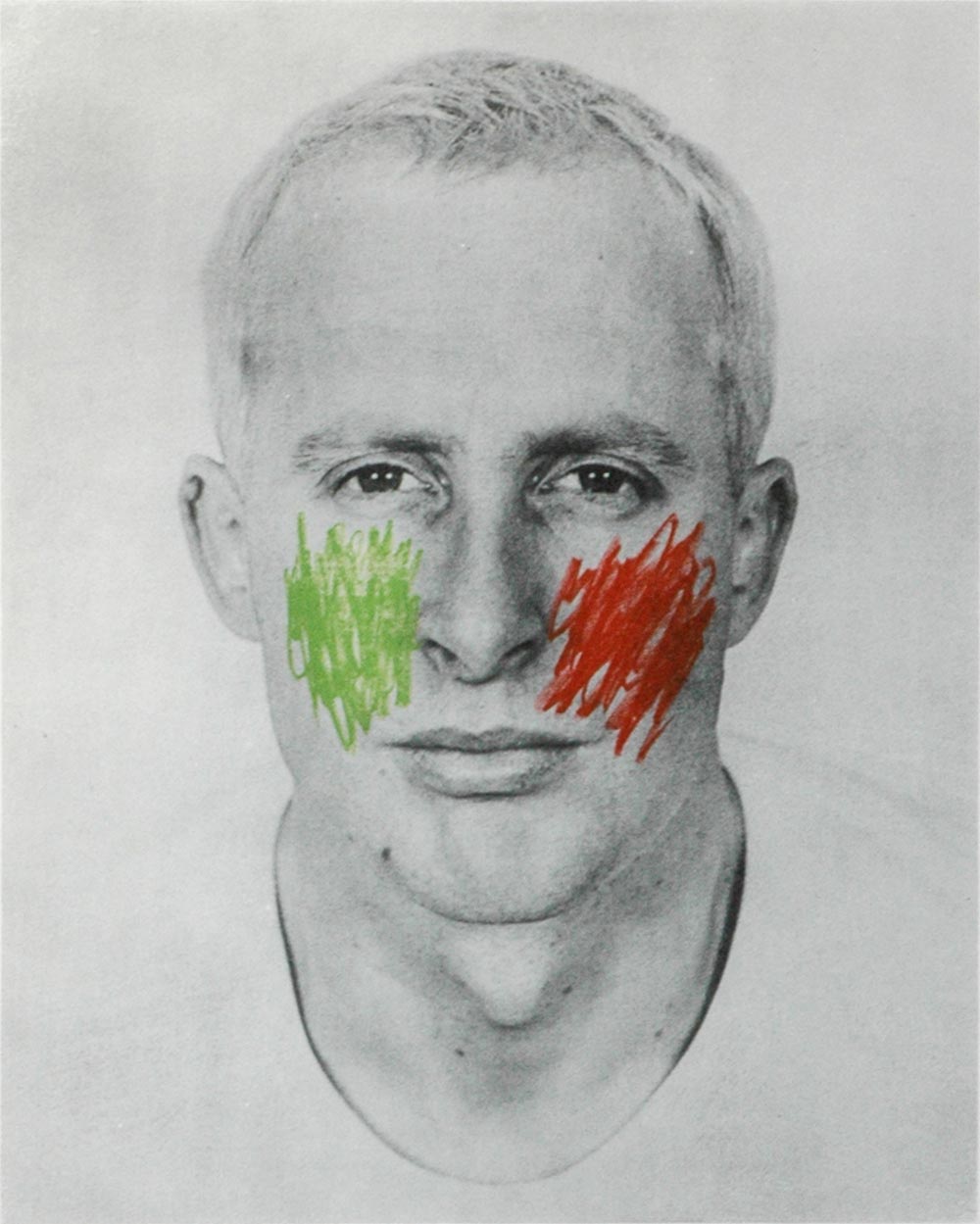
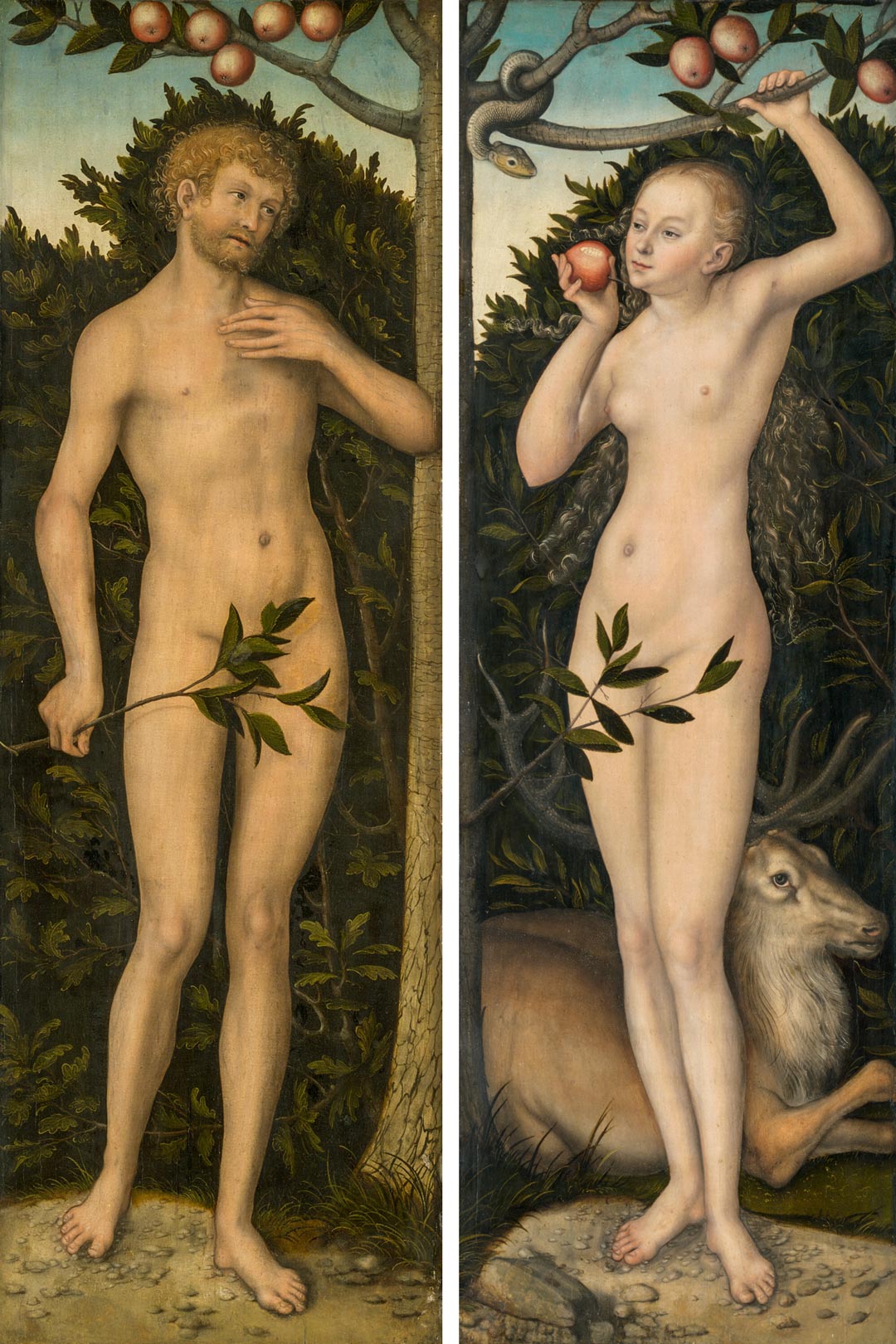
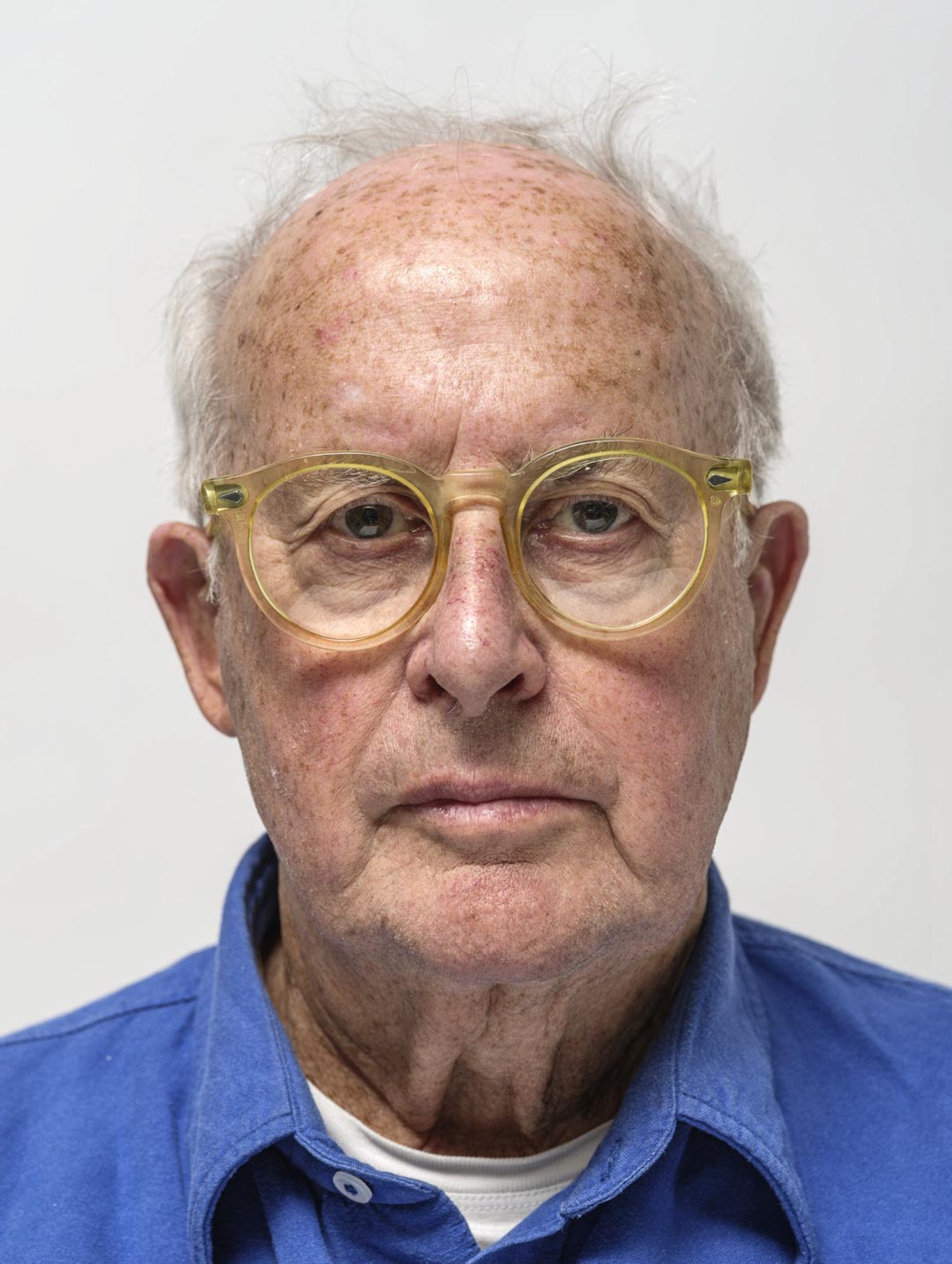
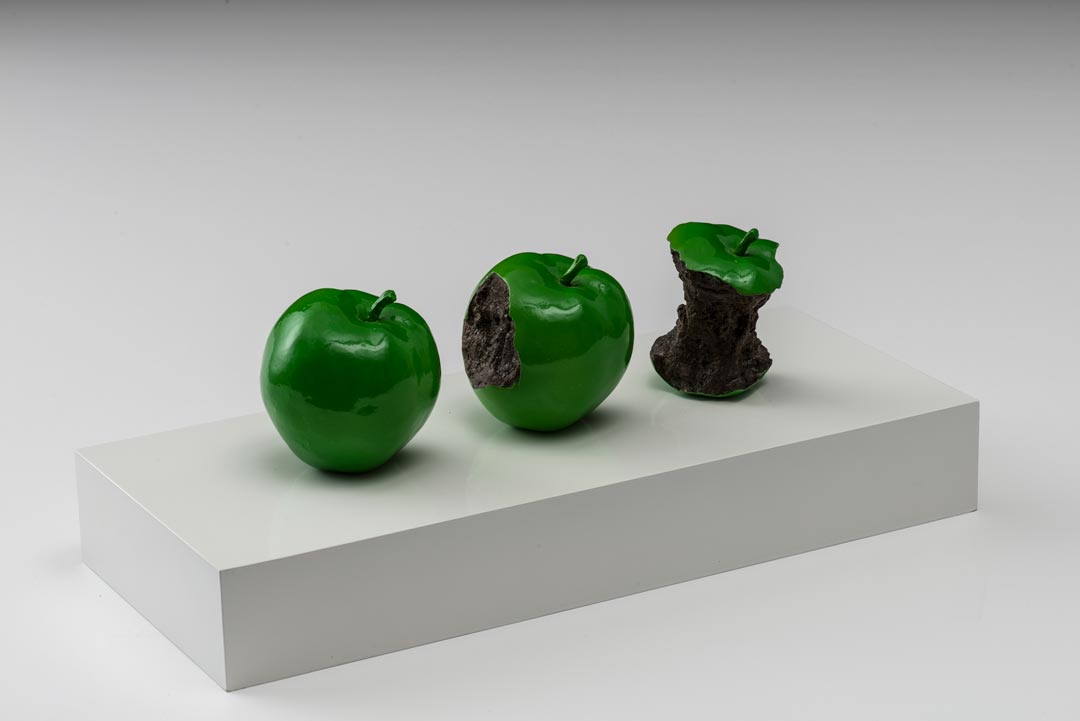
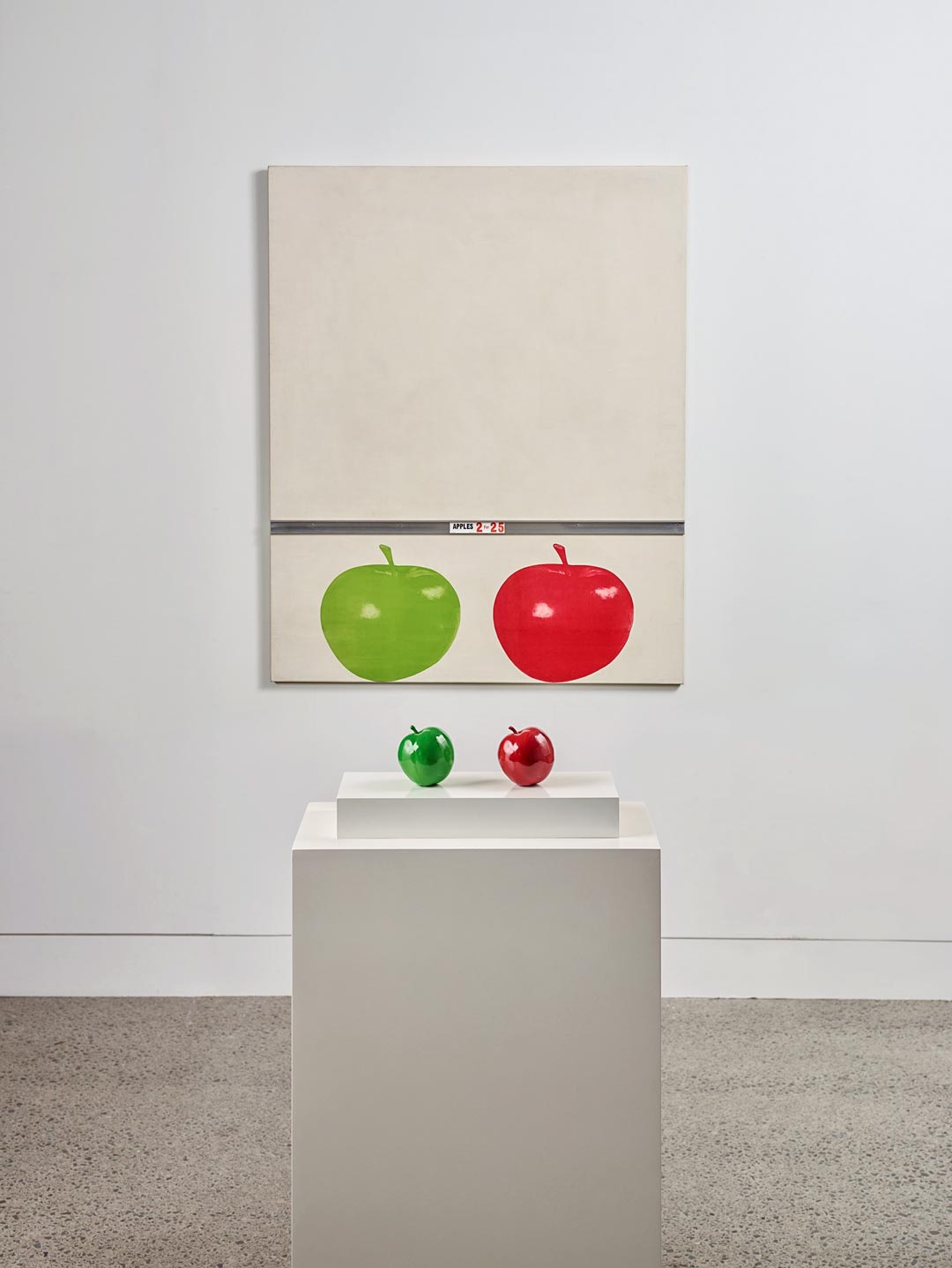
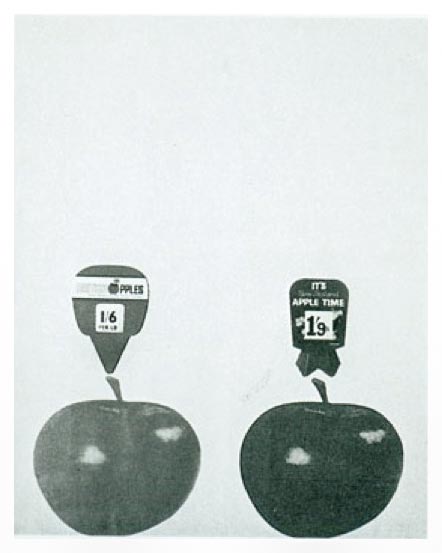
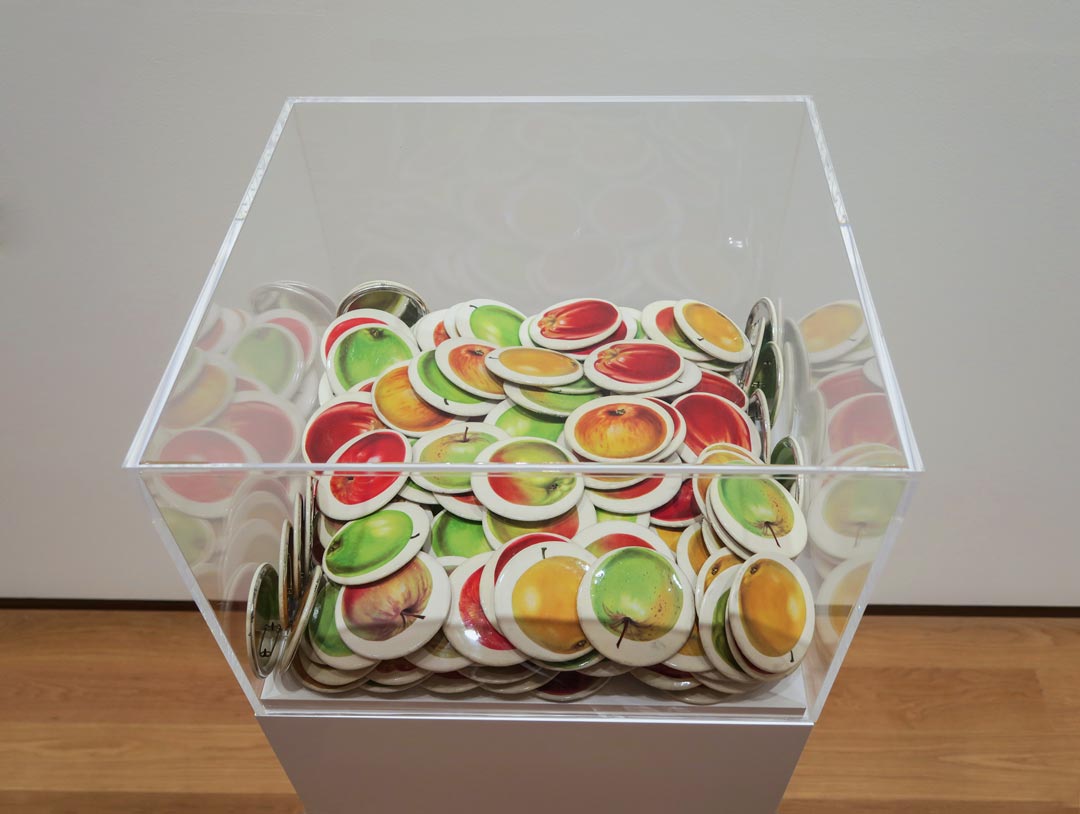
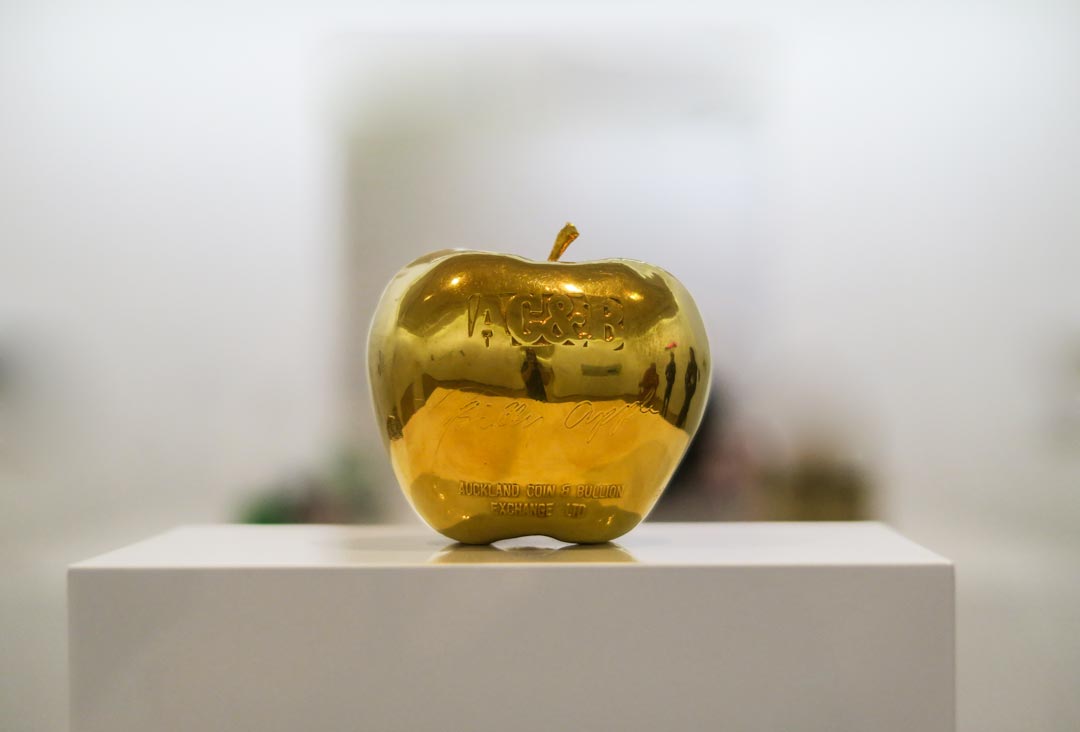


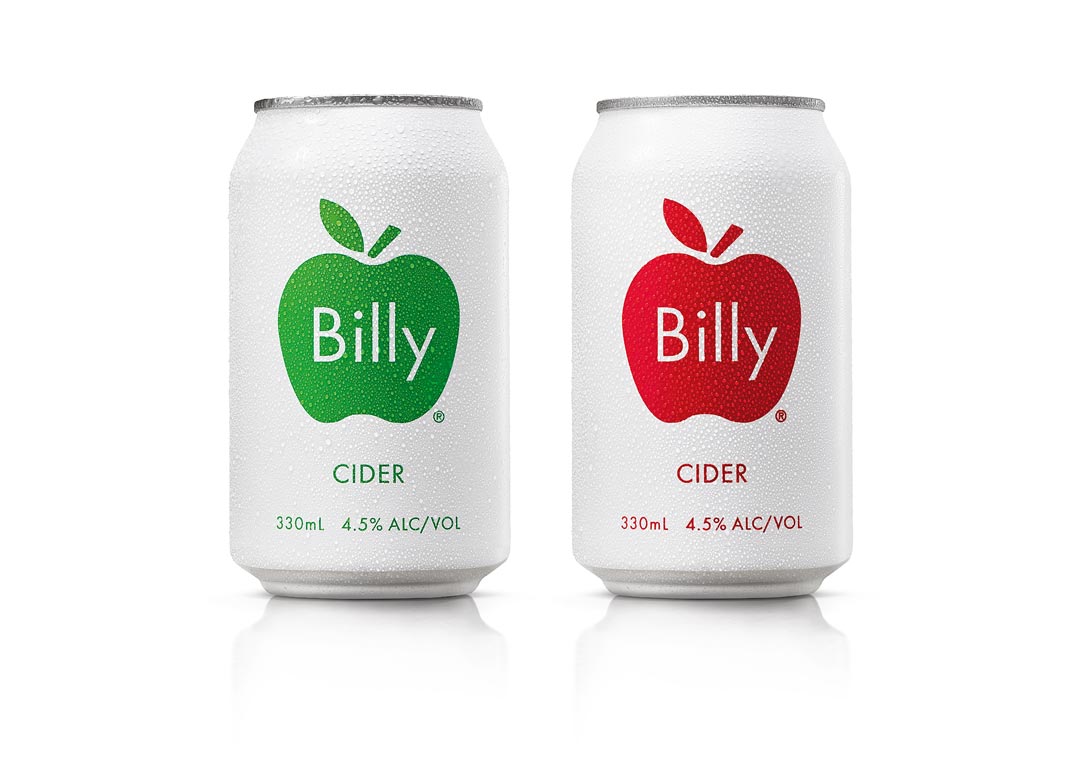
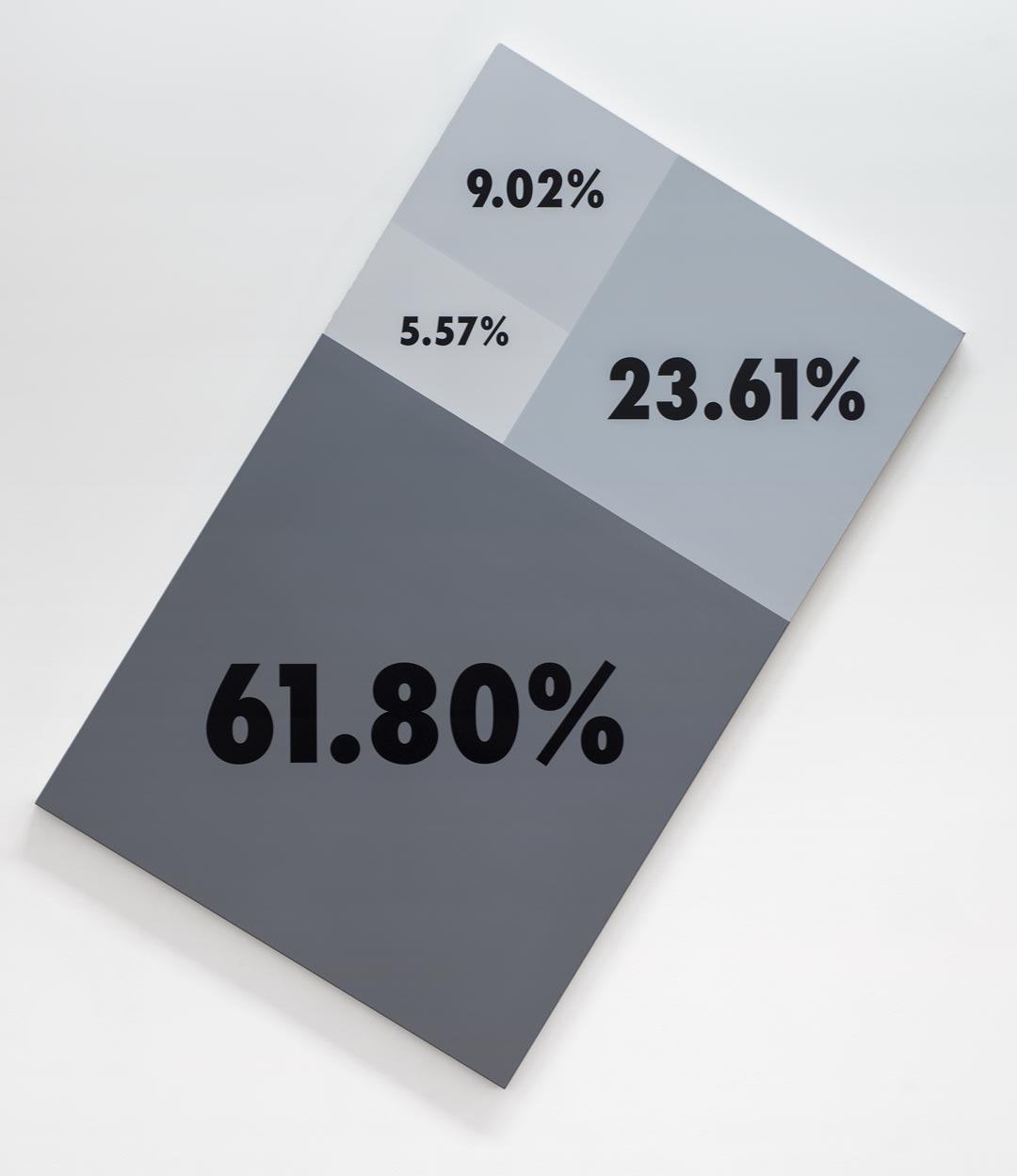
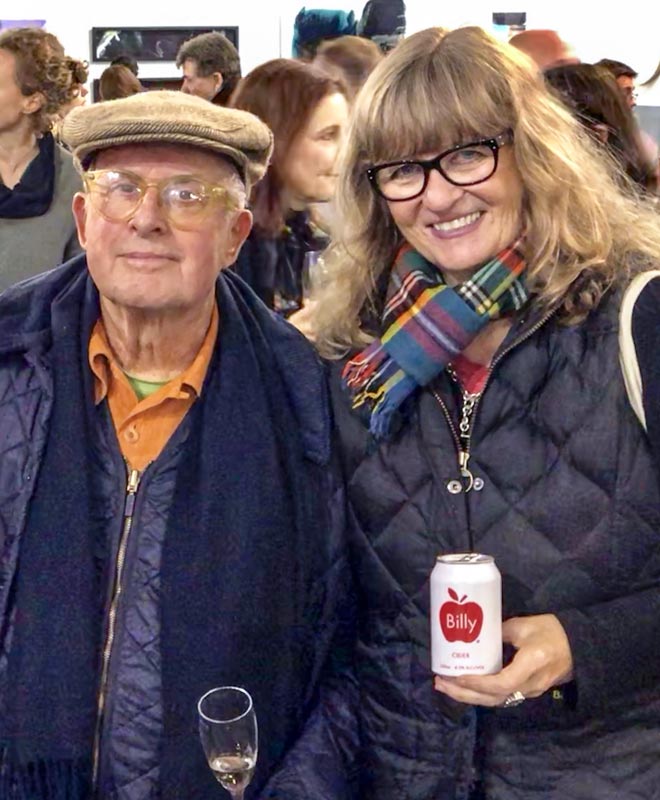
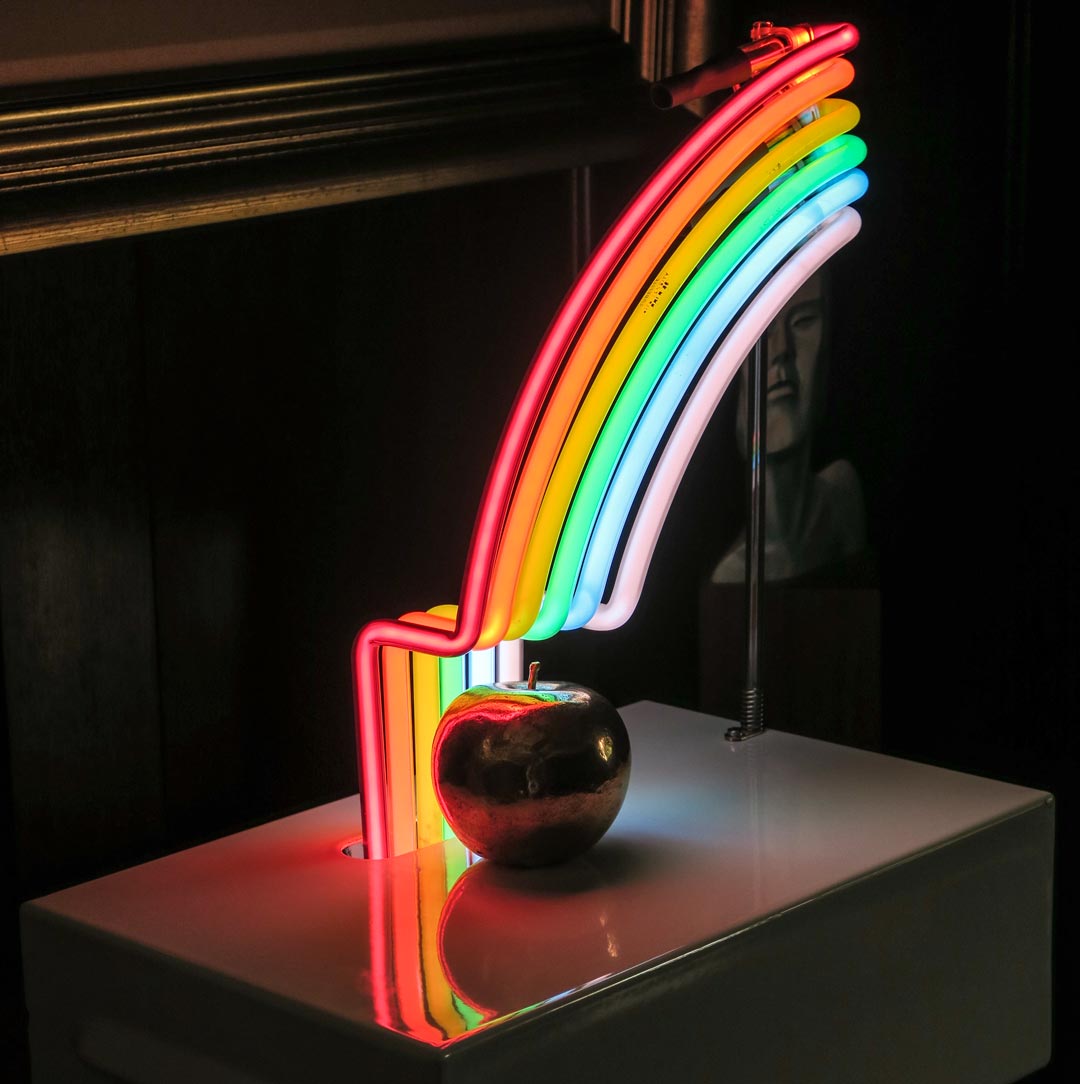


 Photograph by Irving Penn - Red Apples, New York (1985) © The Irving Penn Foundation. Courtesy of J. Paul Getty Museum, Los Angeles USA, Gift of Nancy and Bruce Berman
Photograph by Irving Penn - Red Apples, New York (1985) © The Irving Penn Foundation. Courtesy of J. Paul Getty Museum, Los Angeles USA, Gift of Nancy and Bruce Berman Contemporary Herbarium of the Orchard and Fruits of the Press By Roselyne Corblin and Pascal Levaillant
Contemporary Herbarium of the Orchard and Fruits of the Press By Roselyne Corblin and Pascal Levaillant